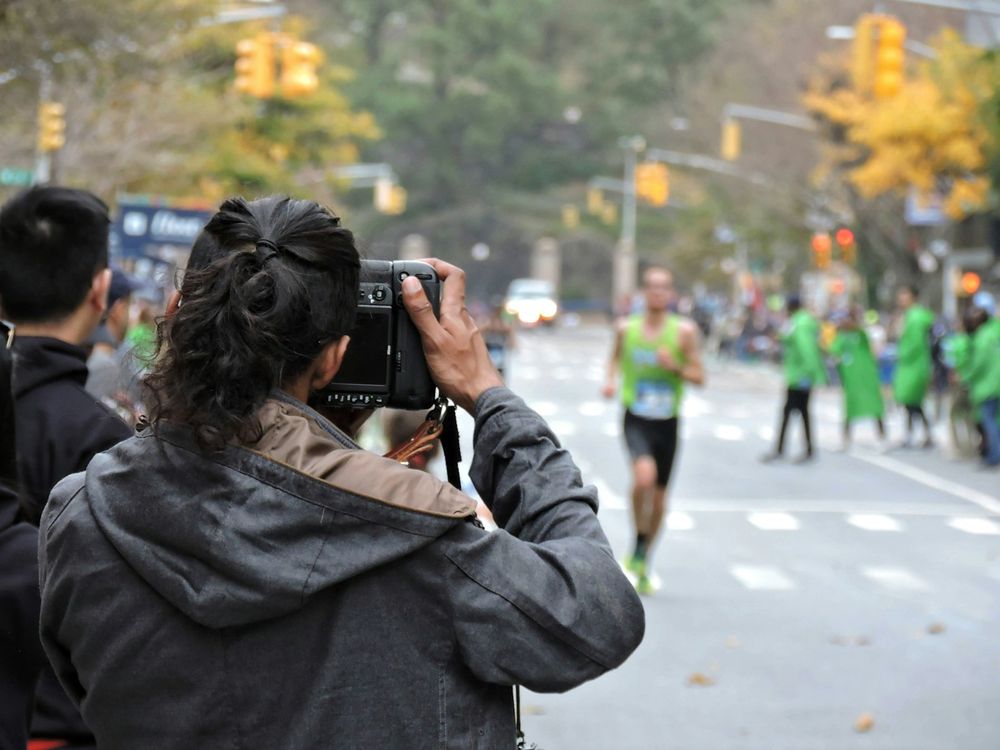History of Photo Tagging in Running
Running has become a global phenomenon, not only as a physical activity but also as a lifestyle supported by technological advances. One of the increasingly popular innovations is photo tagging, a technology that allows runners to find and access their photos from running events, such as marathons or fun runs, quickly and efficiently. This technology combines sports photography, artificial intelligence (AI), and digital platforms to enhance the runner's experience.
Initially, running photography relied on manual methods. Photographers snapped thousands of images during an event, and participants had to manually search for their photos in physical galleries or event websites.This process was time-consuming and often made it difficult for runners to find their moments. The transition to digital photography in the early 2000s was a turning point, allowing photographers to produce digital files that were easier to process and distribute.
However, the main challenge remained: how to identify runners among thousands of participants?
Advances in AI and facial recognition have revolutionized photo tagging. Today, many major running events, such as the Boston Marathon or the London Marathon, use technologies like facial recognition and BIB number recognition to identify runners in photos.
Companies like MarathonFoto and Sportograf use AI algorithms to scan runners’ BIB numbers or faces, then automatically associate the photo with the participant’s profile. After the event, runners receive a notification via email or app to access their photos in hours, not weeks.
Additionally, popular running apps like Strava and Nike Run Club have integrated photo tagging features with social media. Strava, for example, allows runners to upload photos of their runs and tag the location, route, or friends who ran with them. This feature not only makes it easier for runners to share moments, but also increases social interaction within the running community. Moreover, the trend of sharing their exercise progress on social media has become part of the modern lifestyle, with runners often showing off their running stats and photos.
Photo tagging has changed the way runners interact with events and their communities. First, it enhances the participant experience by providing instant access to visual memories. Second, automatically tagged photos make it easier for runners to share their achievements on platforms like Instagram or X, which in turn promotes the running event and encourages wider participation. Third, this technology helps event organizers improve efficiency and participant satisfaction.
In Indonesia, photo tagging has become popular at major running events such as the Jakarta Marathon. During the COVID-19 pandemic, street sports photography, including running, has also grown in response to the increasing public interest in outdoor sports. Photographers are utilizing high-speed photography techniques and mini studios to capture aesthetic running moments, which are then tagged for social media purposes. In addition, in areas with poor lighting or large crowds, AI technology sometimes has difficulty identifying BIB numbers accurately.
In the future, photo tagging is expected to be increasingly integrated with wearable technology, such as Garmin or Fitbit smartwatches, which can store running data and photos in one platform.
Additionally, augmented reality (AR) can allow runners to view their photos directly in the event app with interactive elements, such as running statistics displayed next to the image.
While promising, photo tagging faces challenges, such as data privacy and facial recognition accuracy. Some runners are concerned about the use of their facial data without their explicit consent.
Therefore, event organizers must ensure compliance with regulations such as the General Data Protection Regulation (GDPR), a European privacy law that governs how organizations handle the personal data of EU residents.
The law aims to standardize privacy standards across the EU and give individuals more control over their personal data.
In Indonesia, gotag.me is the pioneer in BIB-based photo tagging and has been around the industry for more than a decade.
- Hasto Prianggoro
